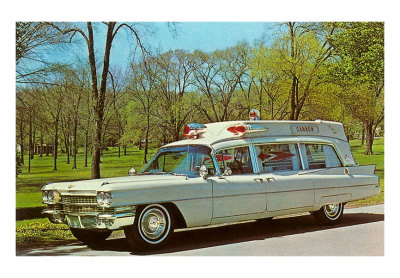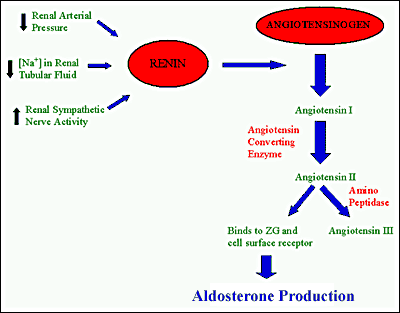Most of us in EMS are pretty good with the typical adult respiratory illnesses — your asthmas, your COPDs, your CHF exacerbations. Maybe the occasional pneumonia. But upper airway illnesses can be harder to keep straight, and two of them are known for occurring especially in pediatrics.
Croup
Croup is an infectious disease, usually caused by viral infection of the upper airway. Once upon a time, it was typically caused by diptheria; with the widespread adoption of diptheria vaccination in the US, this has become rare, and the most common cause is now the parainfluenza virus.
Croup is typically seen in children from 6 months to 6 years of age; approximately 15% of all children will contract it at some point.
Its characteristic finding is a coarse, barking, “seal-like” cough. High-pitched stridor is also often present, as is hoarseness of voice, and dyspnea at late stages. All are caused by narrowing of the upper airway due to inflammation from the infection.
This inflammation is normally at the level of the trachea, possibly stretching down into the large bronchi and up into the larynx, but below the level of the glottis.
The onset is usually gradual, lasting from several days to two weeks. Often, there will be fever or coryzal (cold-type) symptoms, such as congestion or headache. A sudden onset is uncommon; usually there will be a day or two of cold symptoms prior to the onset of cough or hoarseness. The upper airway symptoms are often worse at night. (Occasionally, croup may have a spasmodic cause, sometimes triggered by an allergic reaction [akin to asthma]; in these cases coryzal symptoms are rarely present.)
The main differential here should be croup vs. epiglottitis vs. an aspirated foreign body or anaphylaxis. In most cases, these last can be ruled out by a thorough history. As for epiglottitis, it can best be revealed by the severity of symptoms. In almost all cases, croup does not cause significant airway obstruction leading to major dyspnea or hypoxia. A poor general impression (“big sick”), diminished responsiveness, or respiratory failure should point you towards epiglottitis instead. Drooling is not normal. Death is possible but very rare.
Other signs and symptoms are as typical for respiratory difficult in children, including tachypnea, tachycardia, hypotonia (weak or flaccid muscle tone in the exhausted child), chest retractions, and potentially low O2 saturation. In severe cases, as respirations become shallow and weak, stridor and coughing may not be audible.
Treatment is generally supportive. Keep the child comfortable and reassured, if possible with their mother or other caretaker — panic will increase their oxygen demand and may increase stridor. Provide supplemental oxygen as tolerated; blow-by may be most appropriate. Nebulized racemic epinephrine is appropriate field care for significant cases, and most will receive steroids in the hospital. Steam or humidified oxygen is an old standby, and is anecdotally popular, but research suggests it has no benefit.
Epiglottitis
Epiglottitis is similar in presentation to croup. Its cause is also infectious, but bacterial instead of viral, and historically the microbial agent was almost always hemophilus influenza type B, a bacterium unrelated to the flu except by name. Effective HIB vaccine became widespread in in the late 1980s; as a result, epiglottitis in the US today is actually more common in adults than in vaccinated children. When it does occur in pediatrics, it is typically between the ages of 3 and 7.
Like croup, epiglottitis is a narrowing of the upper airway. However, it occurs higher, above the glottis, and primarily involving the epiglottis and surrounding tissue. Due to inflammation of this flap at the gate of the airway, a sore throat and difficulty swallowing are almost always present. Fever, stridor, and hoarseness of voice are common, as is a muffled speaking voice and tenderness of the larynx, which may present as severe pain provoked by even gentle external palpation. Typically in children there are no other prodromal symptoms such as congestion; adults often do experience coryzal symptoms.
The chief distinction between epiglottitis and croup is the severity. Although far less common, epiglottitis should be considered an acute emergency, and the narrowing of the airway can lead to significant or total obstruction and resultant respiratory failure. The classical late clinical presentation is the young child found in a “sniffing” position, tripodding or sitting upright, with audible stridor (or quiet respirations as failure approaches), drooling and close to exhaustion. (Drooling results from the inability to easily swallow.) Symptoms can be insidious in onset, but usually progress very rapidly. Mortality in adults with epiglottitis is around 7%, although less than 1% in children.
Treatment may involve supplemental oxygen, but maintaining a patent airway should be your main concern. Intubation may be necessary, sometimes suddenly, so prepare for a difficult airway even if the situation seems relatively controlled. Cricothyrotomy is appropriate as a last resort. Direct manipulation can provoke further inflammation, so the use of basic airways (OPA/NPA) is unhelpful and unwise. Although laryngoscopy can help confirm the diagnosis of epiglottitis (the epiglottis and arytenoids will be cherry red and swollen), it can also provoke spasm and further inflammation, so it is discouraged in the field unless immediate and unhesitating intubation is intended.
Albuterol is not indicated, and epinephrine has no benefit. In-hospital care includes antibiotics to clear the infection, and possibly the use of steroids to manage swelling.


Recent Comments